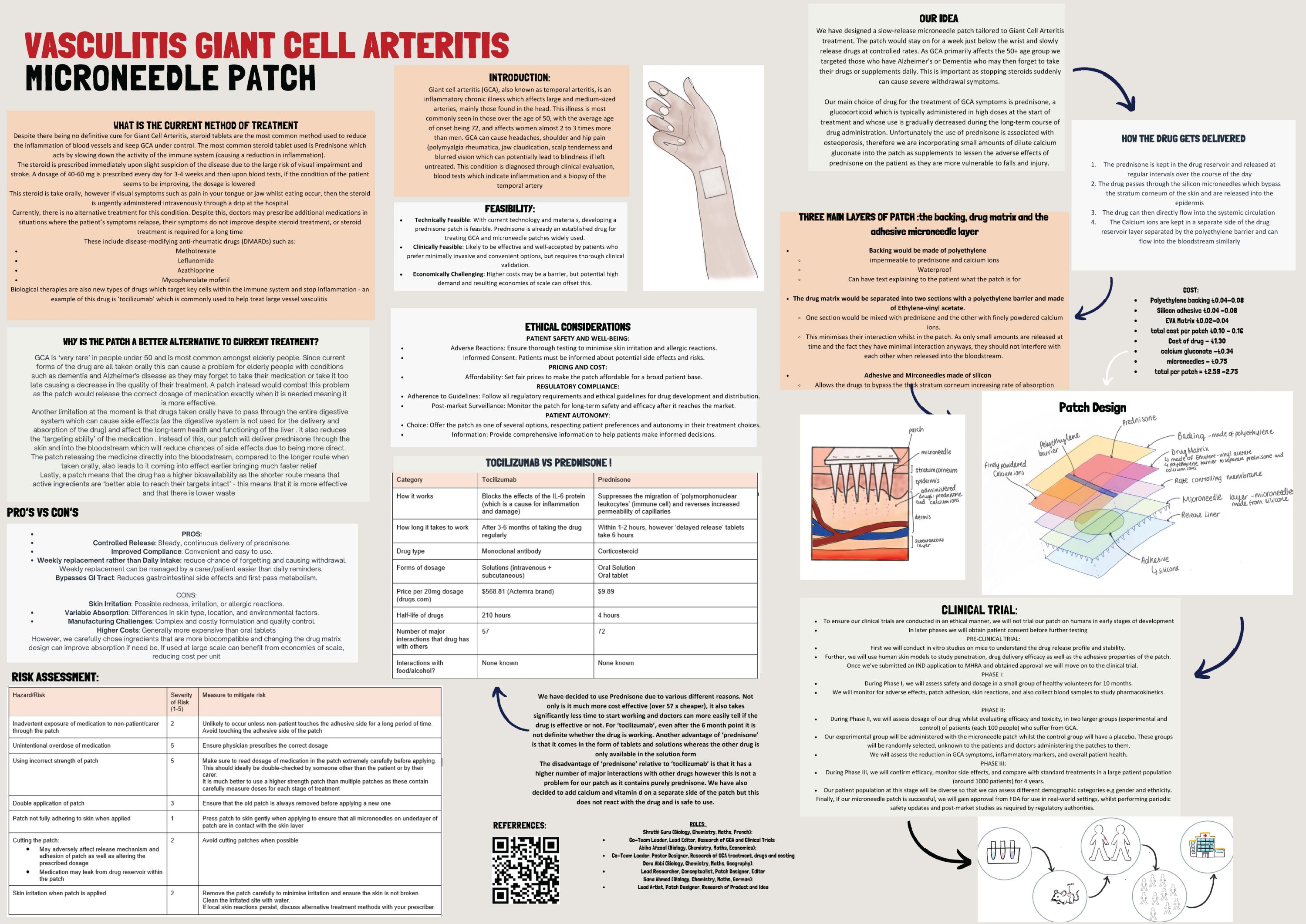Science in Medicine School Teams Prize 2024 - Kendrick Success!
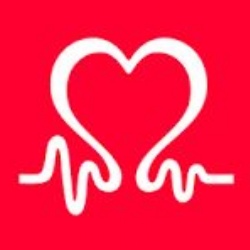
The National Heart and Lung Institute and the British Heart Foundation’s Centre of Research Excellence at Imperial College London offers the Annual "Science in Medicine School Teams Prize" to engage sixth form school students in the UK with science in medicine.
This year, four collaborating Year 13 teams from Kendrick took on the challenge of research and presenting an innovative idea for tackling a medical issue from one of the categories outlined below. Students were required to stretch beyond the school curriculum, think outside the bubble of traditional biomedical fields, and learn about the excitement of research. They considered how trends in science and engineering will impact on health and medicine in the future as well as understand the importance of a multidisciplinary approach and teamwork to effective research and development of improvements in public and individual health. They had to consider the importance of affordability, availability and acceptability in translating inventions towards a reduction in inequality-related poor health outcomes. Finally, students had to appreciate the importance of effective communication in rolling out scientific developments, with an emphasis on art and design.
After submitting an ePoster back in June, three of the teams were shortlisted to attend the online finals in October 2024. The competition received around 55 submissions per category and each shortlist consisted of ten school teams from across the UK. The posters were evaluated by a panel of judges on the following domains: definition and importance of the problem, scientific and technological approach, novelty and vision feasibility, insight into testing efficacy, affordability and availability, social acceptability, poster design, original illustrations, evidence of teamwork.
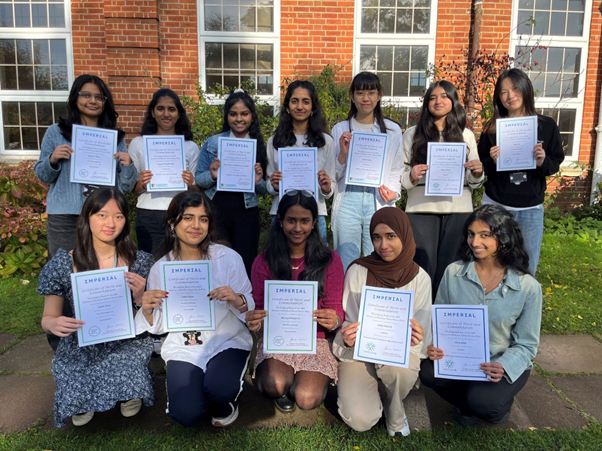
Short-listed teams were invited to give a PowerPoint presentation lasting seven minutes, which was followed by three minutes of questions and answers about their innovative idea to address one of the problems. Each team has written a piece about their ideas:
The Global Health Prize
Ananya, Joelle, Sohini, Zaynah and Sissi
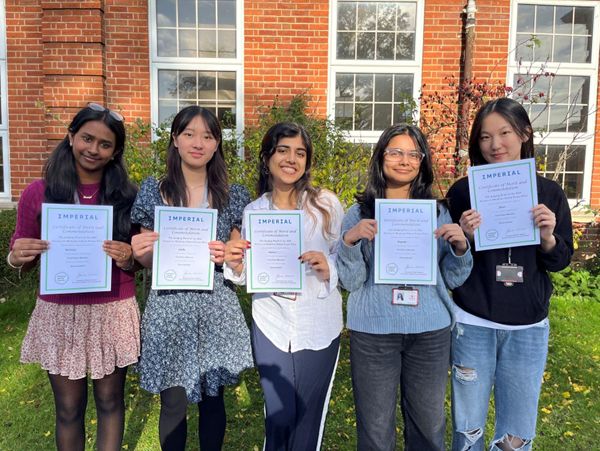
Team Dermoshield decided to target the common issue of second-degree burns for the Global Health Prize, with a secondary focus on antibiotic resistance. By creating a dressing which could be applied locally by victims, we aimed to reduce pressure on hospitals in war zones. We used chemicals which promote healing and cell growth, such as collagen, and a pH-based infection detection dye. We enjoyed working together to research a product that could be so beneficial, globally!
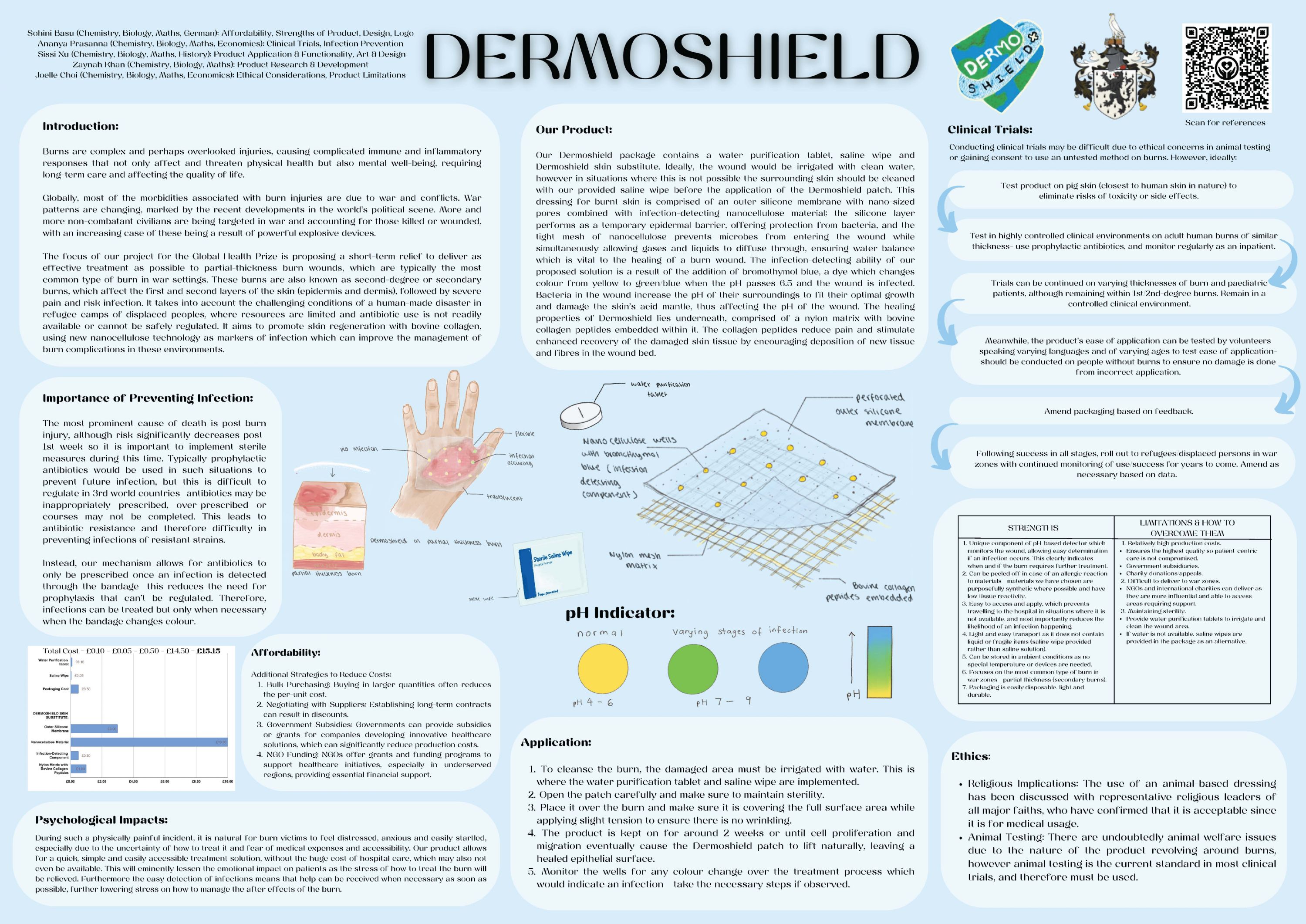
The judges were extremely impressed by this team’s poster and presentation, and they were awarded first place and £2500 for the Science department!
The Scleroderma and Raynaud’s UK Prize
Aniya, Bramhi, Jenny and Vishnupriya
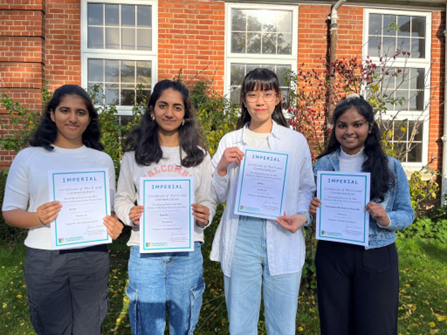 We designed an innovative self-heating, self-massaging glove specifically for individuals with Scleroderma and Raynaud’s disease. The glove incorporates a heating feature to maintain warmth and a massaging system that uses small electromagnetic coils to provide targeted relief to affected areas of the hand. This combination helps improve blood circulation, alleviate pain and enhance comfort. It was an exciting project, and being able to create something that could make a real difference in people’s lives was incredibly rewarding!
We designed an innovative self-heating, self-massaging glove specifically for individuals with Scleroderma and Raynaud’s disease. The glove incorporates a heating feature to maintain warmth and a massaging system that uses small electromagnetic coils to provide targeted relief to affected areas of the hand. This combination helps improve blood circulation, alleviate pain and enhance comfort. It was an exciting project, and being able to create something that could make a real difference in people’s lives was incredibly rewarding!
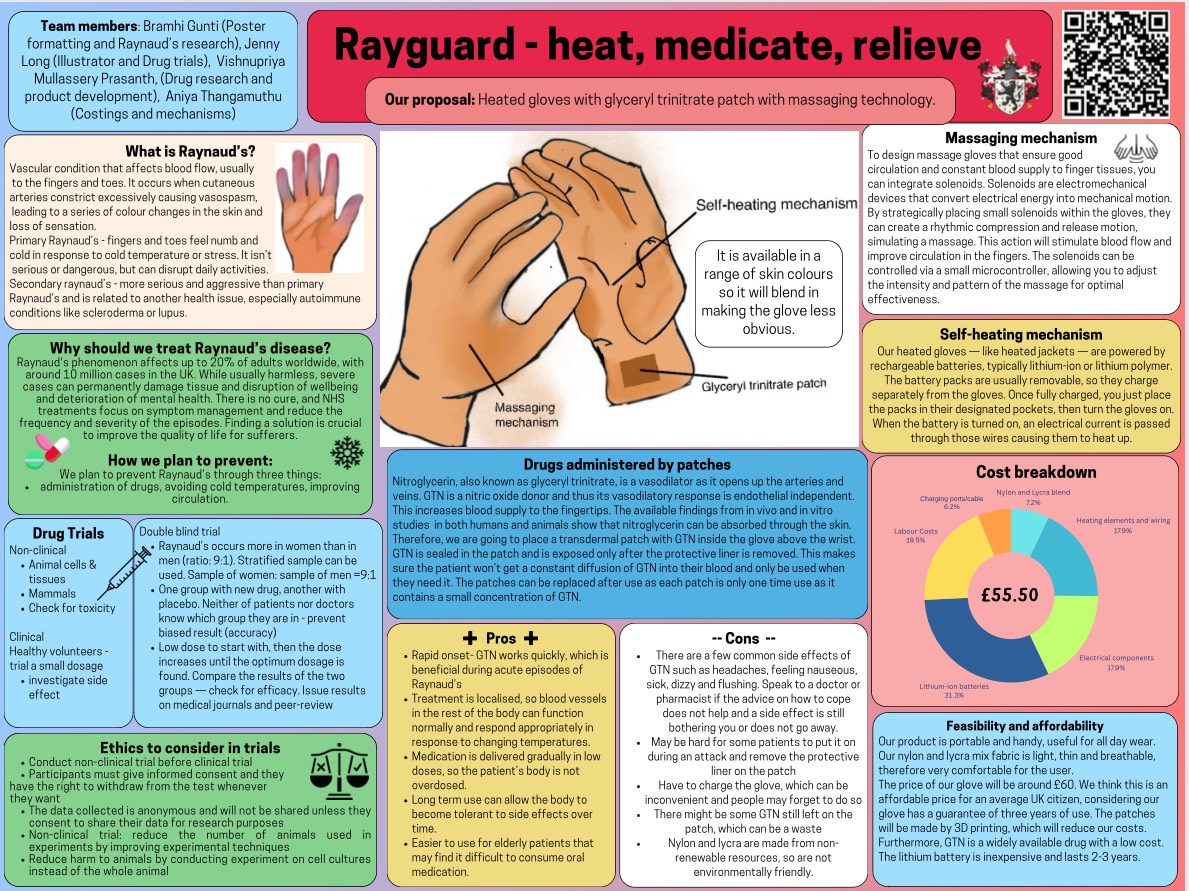
This team was placed runners-up and awarded a prize fund of £1500 to be used for supporting science-related activity in our school!
The Vasculitis UK Prize
Abiha, Sana, Dora and Shruthi (not pictured)
 Our team formulated a patch to revolutionise the treatment of Giant Cell Arteritis, a form of vasculitis that can lead to vision loss and severely impact quality of life. Our original patch design uses microneedle technology to significantly increase the specificity and delivery efficiency of prednisone, the drug used to treat GCA. Since many patients with GCA are over 65 years old, an age group prone to dementia and with higher choking hazards, our patch offers a safer, more convenient alternative to oral medication, as prednisone can lead to unpleasant withdrawal symptoms if stopped suddenly. To address a key side effect of prednisone, osteoporosis (decreasing bone density, which is more dangerous in older demographics), we included calcium supplements in our patch. By using cheaper and more readily available materials, we created a patient-friendly, cost-effective solution that enhances the efficacy and accessibility of GCA treatment.
Our team formulated a patch to revolutionise the treatment of Giant Cell Arteritis, a form of vasculitis that can lead to vision loss and severely impact quality of life. Our original patch design uses microneedle technology to significantly increase the specificity and delivery efficiency of prednisone, the drug used to treat GCA. Since many patients with GCA are over 65 years old, an age group prone to dementia and with higher choking hazards, our patch offers a safer, more convenient alternative to oral medication, as prednisone can lead to unpleasant withdrawal symptoms if stopped suddenly. To address a key side effect of prednisone, osteoporosis (decreasing bone density, which is more dangerous in older demographics), we included calcium supplements in our patch. By using cheaper and more readily available materials, we created a patient-friendly, cost-effective solution that enhances the efficacy and accessibility of GCA treatment.
